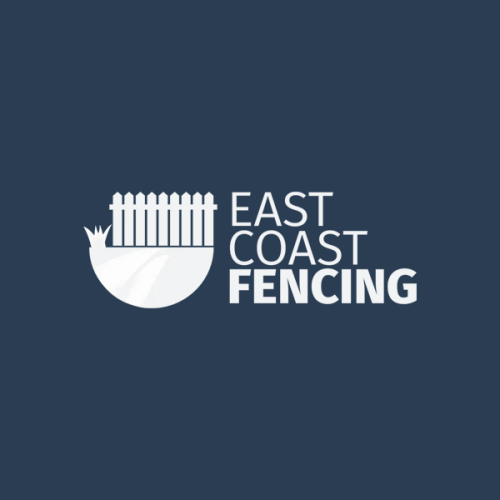Can I Put A Trellis On My Side Of My Neighbours Fence?

Adding a trellis to your garden can be an excellent way to support climbing plants and add some extra privacy. However, when your desired installation is on a shared boundary with your neighbour, it’s essential to understand the legal and social implications. This blog will guide you through the considerations and best practices for placing a trellis on your side of a neighbour’s fence.
Legal Considerations
Property Rights
Property rights are a fundamental aspect when considering alterations to a shared fence. Generally, if the fence is owned by your neighbour, you cannot modify it without their permission. Doing so could be seen as trespassing or property damage. It’s crucial to check the exact boundary lines and ownership in your property deeds to avoid any disputes.
Knowing who owns the fence determines your legal standing. If you share the responsibility for the fence, mutual consent is necessary. If the fence is entirely yours, you have more freedom, but you should still consider the visual and structural impact on your neighbour’s side.
Local Regulations
Local regulations can vary significantly, affecting what modifications you can make. Some councils have specific rules about fence heights and additions, including trellises. It's essential to review these regulations to ensure you are compliant and avoid potential fines or enforcement actions.
Your local council’s planning department is a good starting point for understanding these rules. They can provide detailed guidance on height restrictions, materials, and other requirements. Additionally, some neighbourhood associations have their own sets of rules that you must follow.
Legal Disputes
Legal disputes over fence modifications can escalate quickly, leading to strained relations and costly legal battles. Documenting all communications and agreements in writing is a prudent step. This documentation can serve as evidence if disagreements arise.
Mediation services can be an effective way to resolve conflicts without resorting to legal action. Many communities offer free or low-cost mediation services to help neighbours reach amicable solutions. Understanding the potential for disputes can prepare you to handle them more effectively.
Social Etiquette
Communication with Neighbours
Effective communication with your neighbours is key to preventing conflicts. Discussing your plans openly and listening to any concerns they might have can foster a cooperative atmosphere. A face-to-face conversation is often the best approach, allowing both parties to express their views clearly.
If your neighbour has objections, consider their perspective and try to find a compromise. For instance, you might agree to limit the height of the trellis or choose a design that blends well with their property. Demonstrating flexibility can go a long way in maintaining good relations.
Aesthetic Considerations
Aesthetic considerations play a significant role in how modifications to a shared fence are received. A trellis should complement both properties and not obstruct any views. Selecting materials and colours that match the existing fence can create a harmonious look.
Discussing aesthetic choices with your neighbour before installation can prevent future complaints. Showing them design options and getting their input can make them feel involved in the decision-making process. This collaborative approach can enhance the overall appeal of both gardens.
Long-Term Cooperation
Long-term cooperation with your neighbour is beneficial for both parties. Maintaining an open line of communication about future projects can prevent misunderstandings and build trust. Regularly updating them on any maintenance or further changes can keep the relationship positive.
Consider setting up a joint maintenance schedule for shared structures. This arrangement ensures that both parties are equally responsible for upkeep, reducing the likelihood of disputes. Long-term cooperation creates a more pleasant living environment for everyone involved.
Practical Installation Tips
Choosing the Right Trellis
Choosing the right trellis involves considering the types of plants you wish to grow. Different plants require different levels of support, so select a trellis that suits your gardening needs. Additionally, consider the trellis’ durability and material to ensure it withstands the elements.
Consulting with a gardening expert can provide valuable insights into the best trellis options for your specific situation. They can recommend materials that offer longevity and aesthetic appeal. The right choice can enhance your garden’s functionality and appearance.
Installation Techniques
Proper installation techniques are crucial for the stability and longevity of your trellis. Ensure that the trellis is securely attached to your side of the fence without damaging the structure. Using brackets or other hardware designed for this purpose can help achieve a secure fit.
If you’re unsure about the installation process, hiring a professional can be a wise investment. They can ensure that the trellis is installed correctly and safely. Following the correct techniques can prevent damage to the fence and ensure the trellis remains in place.
Maintenance
Regular maintenance of your trellis is essential to keep it in good condition. This includes checking for any signs of wear or damage and making necessary repairs promptly. Keeping the trellis clean and free from overgrowth can also prolong its lifespan.
Establishing a maintenance routine can help you stay on top of these tasks. Setting reminders for periodic inspections and cleanings ensures that your trellis remains an attractive and functional part of your garden. Proper maintenance can also prevent any issues from affecting your neighbour’s property.
Conflict Resolution
Addressing Concerns
When concerns arise, addressing them promptly and respectfully is crucial. Listening to your neighbour’s issues and showing a willingness to find solutions demonstrates good faith. Sometimes, minor adjustments can resolve their concerns without significant changes to your plans.
Maintaining a calm and friendly demeanour during these discussions can prevent escalation. Avoiding defensive reactions and focusing on finding mutually acceptable solutions can help de-escalate tense situations. Effective conflict resolution can preserve the neighbourly relationship.
Mediation Services
Mediation services can be a valuable resource when direct communication fails to resolve disputes. Mediators are trained to facilitate constructive dialogue and help both parties reach an agreement. They provide a neutral perspective and can suggest fair compromises.
Researching local mediation services and understanding their processes can prepare you for this option. Knowing that mediation is available can provide peace of mind and a structured path to resolving conflicts. Utilizing mediation services can save time, money, and stress.
Legal Action
Legal action should be considered a last resort due to its cost and potential to damage relationships permanently. If you must pursue this route, ensure you have exhausted all other options and have a clear understanding of the legal implications.
Consulting with a legal professional can provide clarity on your rights and responsibilities. They can guide you through the process and help you build a strong case. Legal action is a serious step and should be approached with caution and thorough preparation.
By understanding the legal and social aspects of adding a trellis to your neighbour’s fence, you can make informed decisions that enhance your garden while maintaining good relations with your neighbours.


